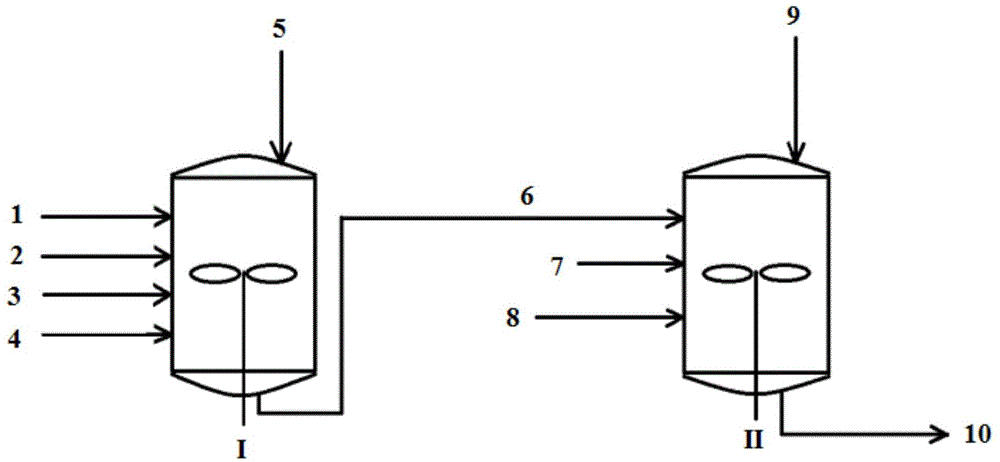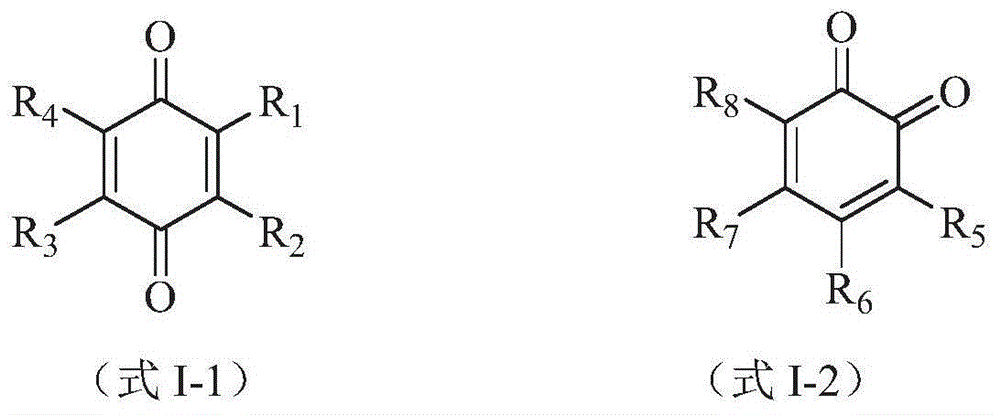Preparation method of halogenated polymer
A compound and copolymer technology, which is applied in the field of preparation of halogenated polymers, can solve the problems of high technical requirements for aluminoxane preparation, unsatisfactory preparation, difficulty in preparing initiator system, etc., so as to improve polymerization efficiency and reduce energy consumption , The effect of simplifying the production process
- Summary
- Abstract
- Description
- Claims
- Application Information
AI Technical Summary
Problems solved by technology
Method used
Image
Examples
preparation example Construction
[0036] The invention provides a kind of preparation method of halogenated monoolefin-alkylstyrene copolymer, the method comprises the following steps:
[0037](1) Under cationic polymerization conditions, in at least one polymerization solvent, at least one monoolefin and at least one alkylstyrene are contacted with each component in the initiator system to obtain monoolefin-alkylbenzene-containing The solution of ethylene copolymer, described polymerization solvent is selected from alkane, the condition of described contact makes, by weight, the content of the unreacted alkylstyrene in the described solution that contains monoolefin-alkylstyrene copolymer is Not higher than 1000ppm, preferably not higher than 500ppm, more preferably not higher than 200ppm;
[0038] (2) The solution containing the monoolefin-alkylstyrene copolymer obtained in step (1) is contacted with a halogen-containing compound, so that part of the hydrogen atoms in the molecular chain of the monoolefin-al...
experiment example 1
[0118] (1) 0.142g 2,3-dichloro-5,6-dicyano-p-benzoquinone is dissolved in 200g and contains dichloromethane of p-dicumyl chloride (concentration is 0.005mol / L), the obtained The solution was pre-cooled to -85°C, and then 5 mL of a 0.9 mol / L n-hexane solution of ethylaluminum dichloride (EADC) and 4.5 mL of 1.0 mol / L diethyl chloride were sequentially added to the solution The n-heptane solution of aluminum (DEAC) (the molar ratio of EADC to DEAC is 5 / 5), after mixing evenly, put the obtained mixed solution in a cold bath at -85° C. to age for 100 min, thereby obtaining an initiator solution.
[0119](2) Add 800 g of n-hexane pre-cooled to -80 °C, 100 g of isobutylene pre-cooled to -80 °C and 6 g of p-formaldehyde at room temperature (25 °C) in a 2000 mL stainless steel reactor equipped with strong constant speed Base styrene (content 98% by weight), mix well. Add the initiator solution prepared in step (1) dropwise to the reactor. Wherein, the adding amount of the initiator ...
experiment example 2
[0124] The brominated monoolefin-alkylstyrene copolymer was prepared in the same manner as Experimental Example 1, except that in step (1), the aging time was 60 min; in step (2), the polymerization reaction time was 60 min. The experimental results are listed in Table 1.
PUM
 Login to View More
Login to View More Abstract
Description
Claims
Application Information
 Login to View More
Login to View More - R&D
- Intellectual Property
- Life Sciences
- Materials
- Tech Scout
- Unparalleled Data Quality
- Higher Quality Content
- 60% Fewer Hallucinations
Browse by: Latest US Patents, China's latest patents, Technical Efficacy Thesaurus, Application Domain, Technology Topic, Popular Technical Reports.
© 2025 PatSnap. All rights reserved.Legal|Privacy policy|Modern Slavery Act Transparency Statement|Sitemap|About US| Contact US: help@patsnap.com



